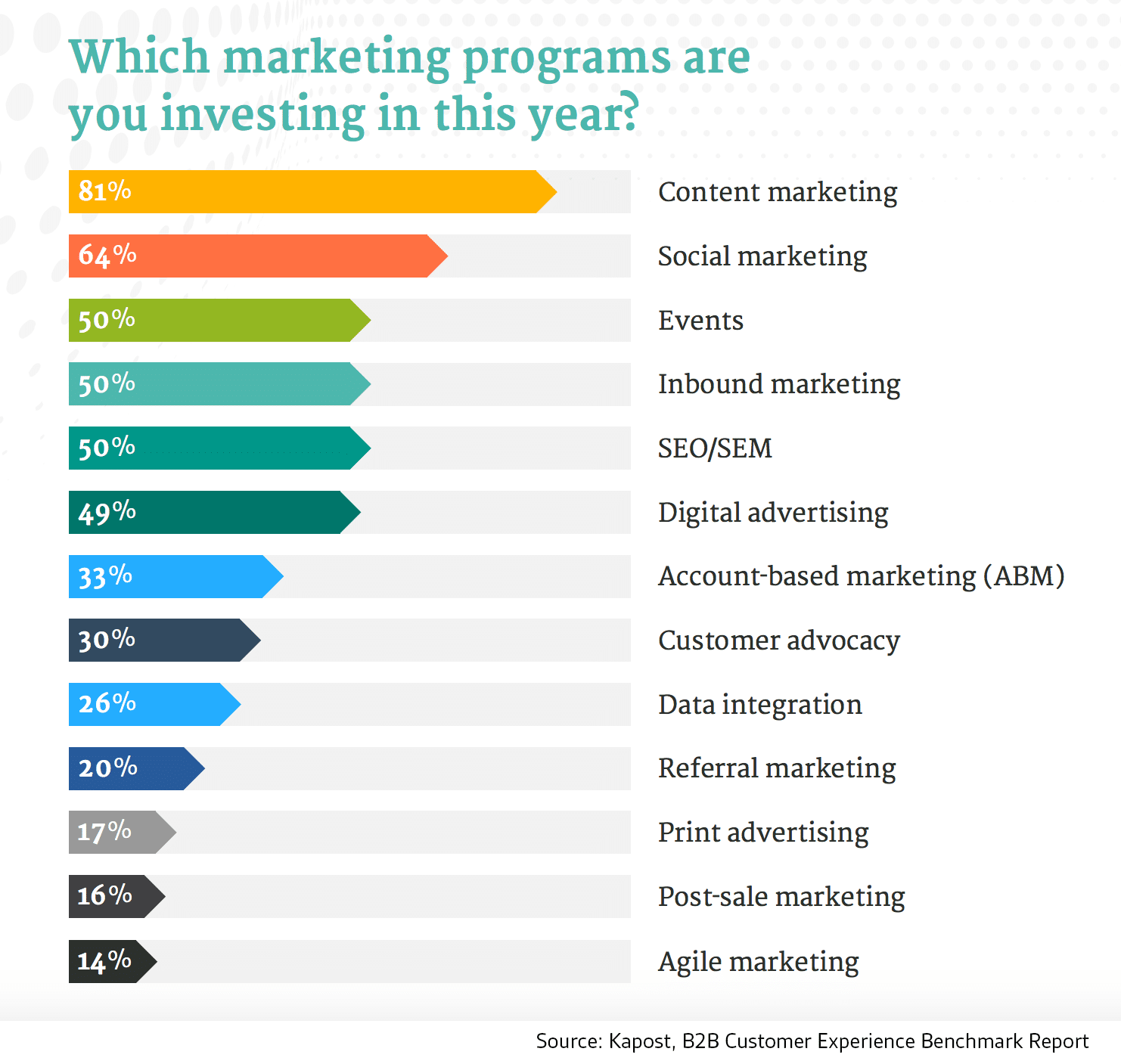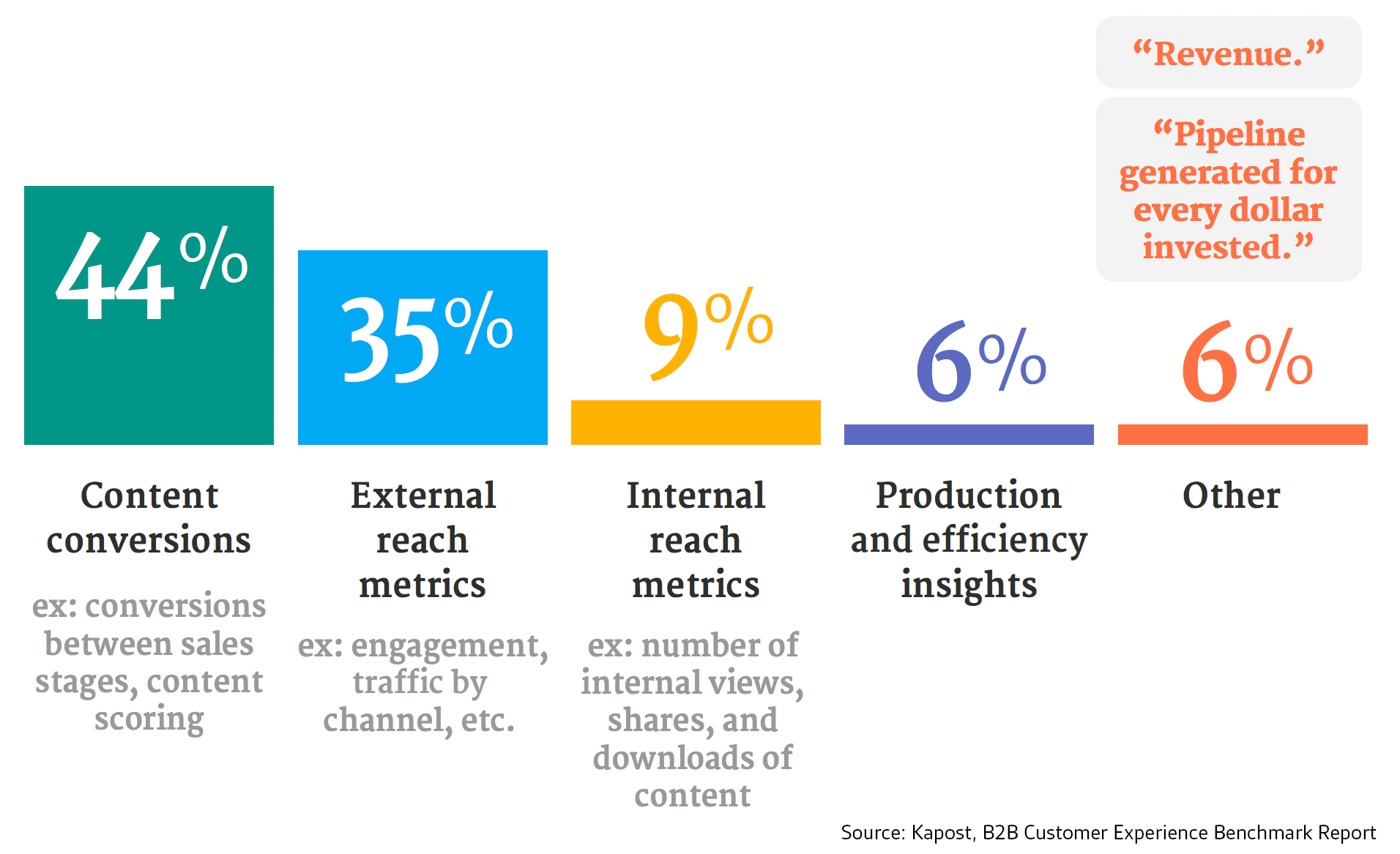You’ve Invested BIG in Content Marketing. Now What?
81% of marketers invest in content marketing, making it the top marketing investment of 2016, according to the recent B2B Customer Experience Benchmark Report from Kapost. That’s a shockingly high number, right? The reason is simple, content builds authority in a subject matter, helping brands cut through the clutter of traditional advertisements and marketing by providing true value. That’s probably why you and your team are investing in content distribution, right?
Content marketing has become so important that marketers should consider these key stats from a recent Business2Community article:
- 67 percent of the typical B2B buyer’s journey is now done digitally, and 9 out of 10 B2B buyers say online content has a moderate to major effect on their purchasing decisions. (Lenati)
- 80 percent of business decision-makers prefer to get company information in a series of articles over an advertisement. (Stratabeat)
- Content between 3,000 and 10,000 words receives the most social shares—even though publishers are producing 16 times more short-form content than long. (ClickZ)
- The two most popular types of brand content for consumers/buyers are images (22 percent) and video (15 percent). Ebooks and white papers are least favored (at 3 percent each). (SocialTimes)
- Traditional digital content mediums still work best for reaching global business leaders. 85 percent prefer text-based articles (vs. 5 percent for video) for helping to make business decisions. (MarketingSherpa)
- But that won’t last forever. Nearly half of all B2B researchers are Millennials, and already, 42 percent of total B2B searches are via mobile. (Branding Bricks)
Marketers truly believe content distribution can produce great results for their businesses, which is why they’re investing so much time, energy and resources into creating incredible content. But consider this last important statistic by Business2Community:
Brands spend 25-43 percent of their marketing budget on content, yet only 23 percent of CMOs feel they are producing the right information for the right audience, and delivering it at the right time and correct format.
The Struggle is Real
As outlined in the Kapost B2B Customer Experience Benchmark Report, content consistency is key, therefore:
- Consistency across content, teams and channels is the backbone of an effective customer experience.
- Key internal stakeholders agree that inconsistency across content and messaging has a negative impact on the customer experience
“Consistency across content is the final milestone marketers should aim to achieve to successfully deliver an effective customer experience. But first, B2B organizations have a lot of work to do to overcome process inefficiencies and internal misalignment, the two biggest barriers to content consistency,” the article said.
Revenue is Priority
Organizations that are spending significant resources – whether time or money – want to see a return on their investment in content marketing. While it may take months or even years to fully realize the value from the investment, the measurement is of extreme importance. CMOs and marketing leaders need to know the resources they are spending on marketing, and specifically content marketing, are making a direct and measurable impact on the bottom line.
“Content conversions between sales stages are the most important metrics to measure for a complete performance review of the end-to-end customer experience.” Kapost explained. “Marketing organizations that have the right infrastructure to accurately track content conversions at every stage of the buyer’s journey have a clearer view of how content works and are better positioned to identify opportunities for optimization.”
Which Metric is Most Important to You?
Every organization is different and has various goals and processes, so it’s important to first understand what the most important metric for content is at your organization. Content distribution? Conversions? Something else entirely? The Kapost article asked the question, and the results include:
Understanding how content impacts metrics is “critical for organizations aiming to deliver, measure and optimize great customer experiences.”
How Are You Putting Content to Work?
Whether you’re a digital marketer, content marketer or both, conversion rate metrics are near and dear to your heart. It helps you determine what’s working, not working and the overall impact a call-to-action or design can have on that particular marketing campaign.
Explainer videos, storytelling, a/b testing, overall design and marketing campaign software can all help boost your conversion rates so you and your team generate more qualified leads that translate to closed/won business for your sales team.
Use these recommendations to get started and find out what works best for your team. And if you’d like to use employee email for content distribution, we’d love to help! Check out the latest Sigstr resource to learn more:


